RANGER Cat Doors for Doors
RANGER Cat Doors for Doors
Insulated Flap Seals Out Extreme Temperatures
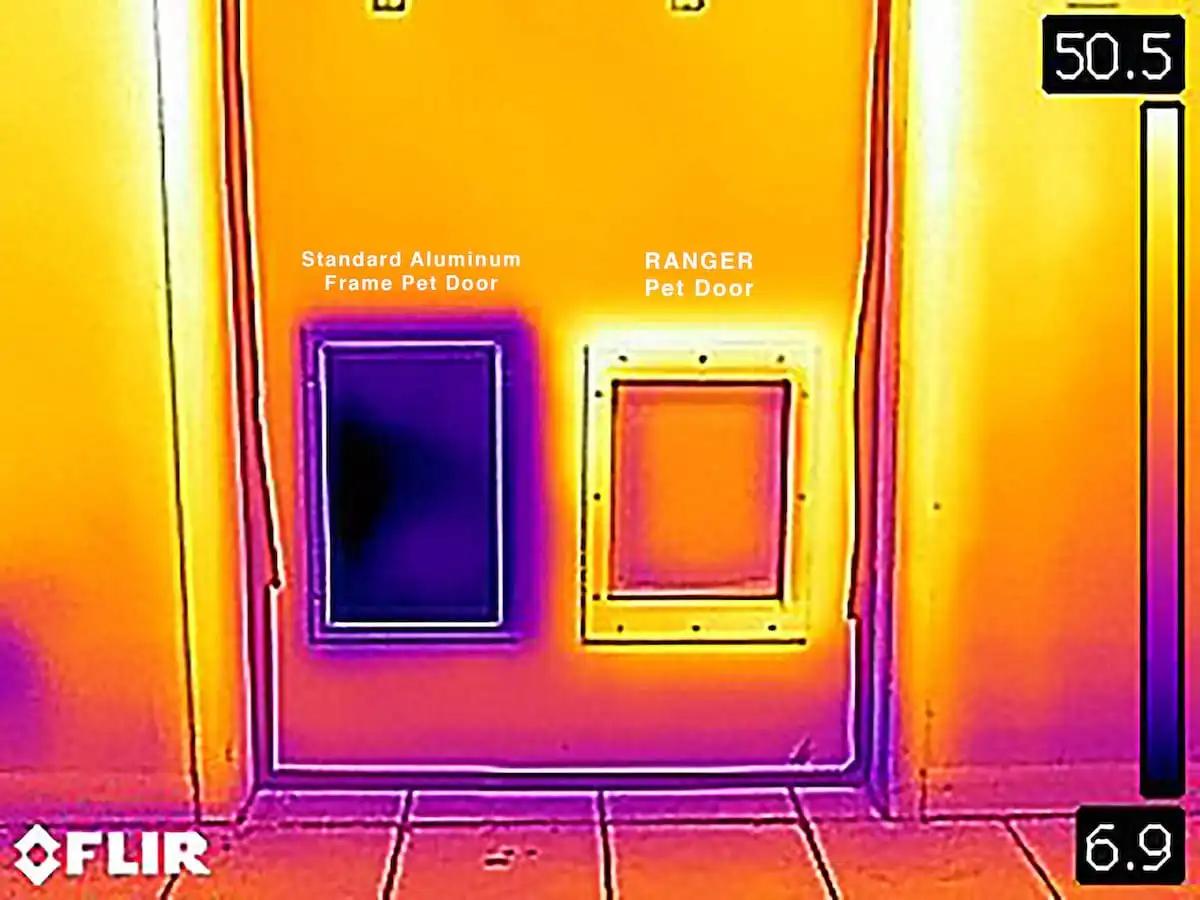
Right: RANGER, registering at room temp
Outside temperature was -1° F (-18° C) and indoor temperature was 55° F (13° C). Oranges, yellows, and whites are areas of relatively warm temperature, while purples and blacks are areas of relatively cold temperatures. Temperature scale is on the right of the image.
Avoid Leaky Pet Doors
Most cat doors are extremely leaky.
In fact, over 90% of the energy loss from conventional pet doors comes from air leakage – letting cold air directly into your home.
The RANGER pet door with DoubleMag seal is virtually airtight, so it keeps outdoor air outside where it belongs.
15X Better than Energy Star
The DoubleMag seal is so good, third-party lab testing showed that it is 15X better at preventing outside air from coming in than US Energy Star requirements for human doors.
500X Better than Other Pet Doors
Other brands pet doors don’t actually make a seal. Even those with a “double flap” or magnets to “keep the door closed” aren’t good enough, because they don’t actually seal out the wind and drafts.
Lab testing with the “best selling” pet door shows how much better RANGER cat doors perform. Under official testing conditions, the competitive door leaks over 16 cubic feet of air per minute per square foot.
That’s over 500X worse than the RANGER pet door standard of 0.03 cfm/sq ft!
15X Better than Energy Star Standards
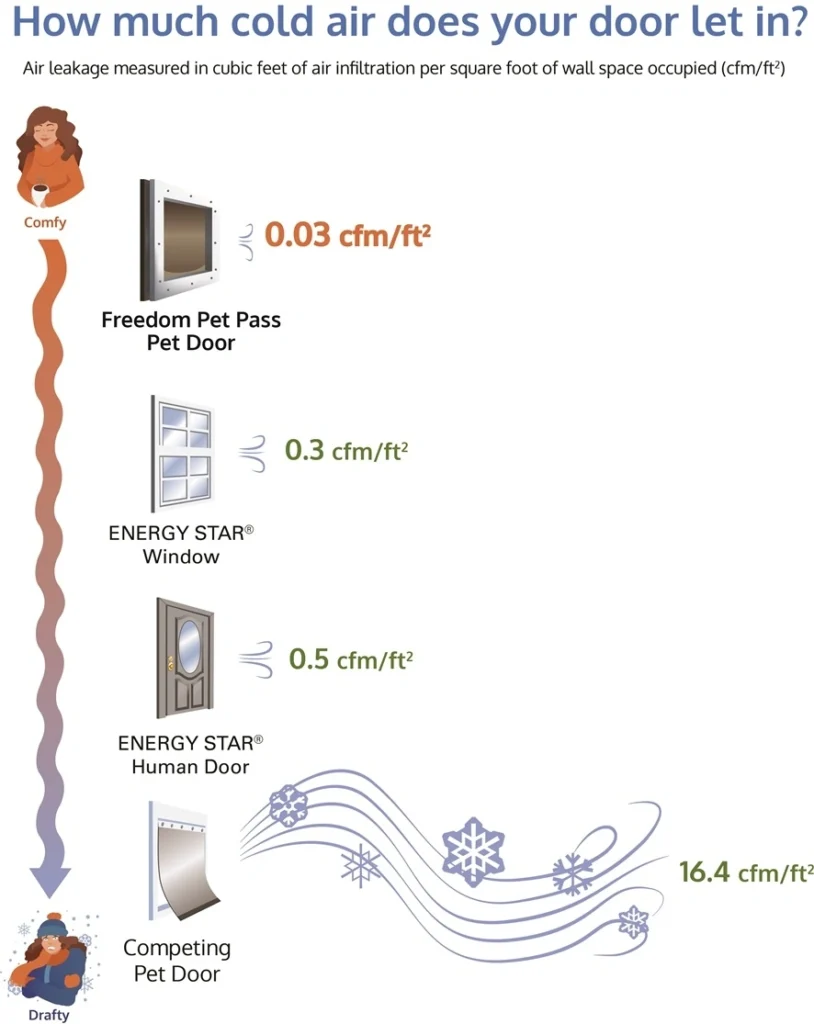
Insulated Flap System
RANGER cat doors have a thick, insulated flap to reduce conductive heat loss, which is heat loss through material. Made for cold weather, the flap components will stay flexible and functional to -40 and below.
Insulated Frame Material
The cellular PVC used in our frame is 3,000X more insulating than the aluminum material used in the frames of lesser pet doors.
Zero Drafts
With pet doors, most energy loss comes from convective heat loss – cold air blowing in around a poor seal. The DoubleMag seal on RANGER Pet Doors eliminates air leaks.
Actual Lab Data – Not Marketing Hype
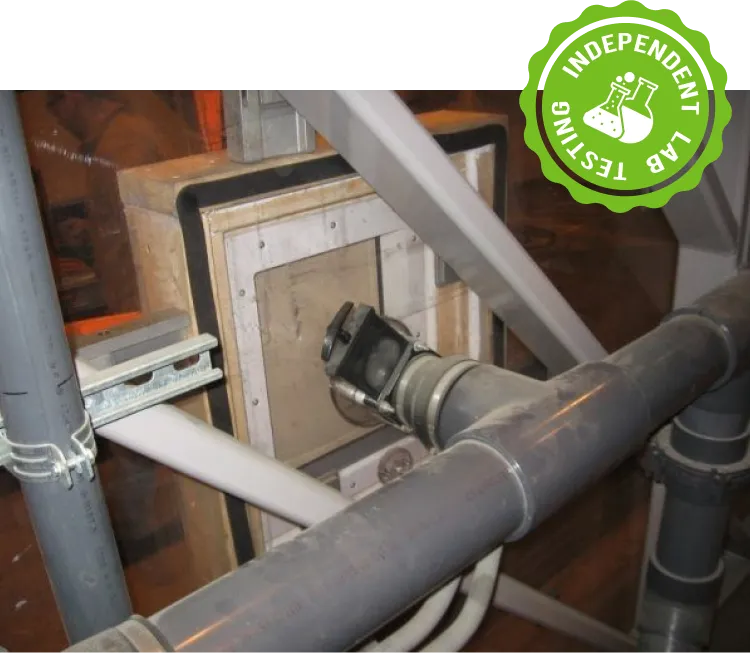
Many pet doors “claim” energy-efficiency with bogus comparisons and no proof.
RANGER cat doors have extensive independent laboratory testing that prove how efficient they are.
Our doors are evaluated using the same tests that are used for Energy Star certification for windows and human doors, and the results show that RANGER pet doors are 15X better at blocking outside air than requirements for human doors.
Engineered from the Best Raw Materials
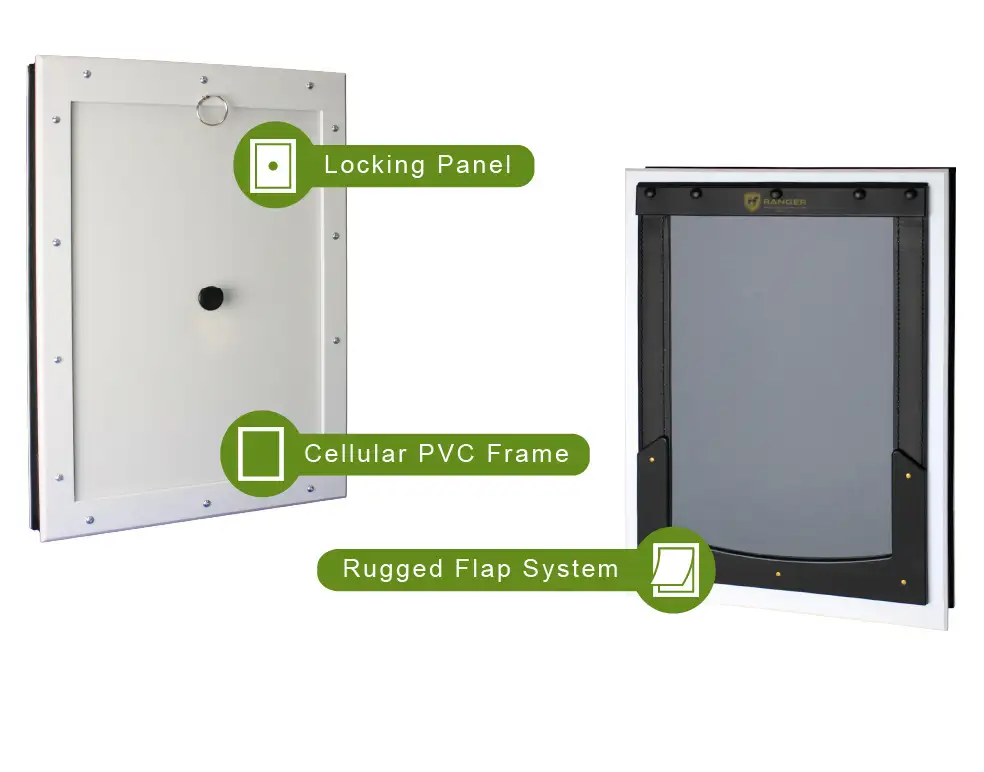
Note: to prevent injury to pets and damage to the door, do not use the security panel to lock your pets outside.
Cellular PVC Frame
Strong, weatherproof, and mold-resistant, and 3,000X more insulating than metal frames used on lower-end cat doors.
Rugged Flap System
The insulated flap system is made from premium materials for maximum energy-efficiency, pet safety, and durability. The flap has an insulating SBR rubber core, protected with marine-grade canvas on each side. The flap seal is made from thermoplastic polyolefin, a material also used for industrial roofing.
Locking Security Panel
All door-mounted RANGER cat doors include a locking security panel. The “up-and-in” insertion of the panel means no additional clearance is needed around the pet door.
Written Instructions
RANGER door-mounted pet doors come with thorough written installation instructions. If you would like to download and print the written instructions, click the button below or the picture of the instructions.
If, after reviewing these instructions, you are not confident in your abilities to successfully install the pet door, you should consider enlisting the help of a licensed contractor or handyman.
Prework: Tools
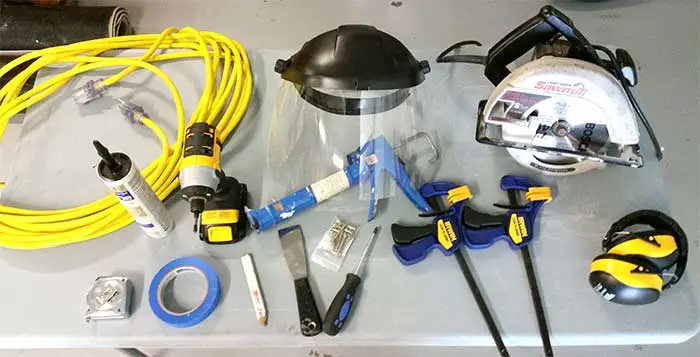
Tools required to install a RANGER by Freedom Pet Pass door-mounted pet door into a raised panel door include the following:
- Safety glasses
- Ear protection
- Tape measure
- Clamps
- Battery operated drill
- Shield
- Skill saw
- Proper blade
- File
- Caulk gun
- Blue painters tape
- Squares
- Level or straight edge
1. Measure Your Pet

Measure your tallest pet to the withers (front shoulders).
Make a mark on the interior side of your human door at least 3” (5 cm) higher than your tallest pet’s height at the withers. This ensures that your tallest dog will be able to pass through the pet door without putting stress on his or her knees and back. If you can spare it, consider giving a little extra cushion on the height.
Alternatively, if you have done the cardboard cutout test (described in the Sizing section), you can use the cardboard cutout for this step. This is what is shown in the first part of the video in Step 2. Either method gives the same result.
Many people ask, “how far off of the floor should the door be?” This is typically not as important as making sure the top of the door is high enough. Most dogs pick up their legs quite a bit as part of their natural gait, so they can clear many inches without interrupting their stride. For households with tall and short pets, the door should be mounted for ergonomic use by the tallest pet. Shorter pets can be accommodated with something like our Pet Step.
2. Trace the Rough Cut Line
Begin the project with the interior of your home door facing up on saw horses. The object here is to locate and place the product where it will best fit your door and your dog. Pre-measure for the dog.
Take the pet door (the piece with the flap) and place the inside center of the frame on the line that you’ve drawn to determine the height that will best fit your door and your dog. Double check your side measurements to make sure your door is centered, and double check your height measurements. Once this has been completed, trace around the outside of the door with pencil.
3. Cut Hole in Door
Begin with a good saw and the proper blade installed to cut through your home door application. Use a metal blade for metal doors, a wood blade for wood doors, etc. If possible, use a new blade when cutting the opening. We don’t recommend cutting into your door if it is your first time using a saw.
Start your cut at the back corner and work counter clockwise around the door.
Line up the saw blade with the pencil line and with a good grip on the saw carefully begin your cut.
Once the cut is complete on the inside of the door, flip the door over on the sawhorses (to external side). Use clamps and a bar to secure the cutout in place. You don’t want it dropping through prior to completing the cut.
Use a square to trace in the corners that still need to be cut. Use the saw to make the final cuts in the corners.
Tap out the cut piece to reveal the rough opening. File the edges if needed.
4. Attach Pet Door
Place the pet door into the hole with the exterior side of the pet door (the side with the flap system) oriented to the exterior side of the door and the hinge of the flap oriented toward the top. Clamp the pet door in place, and flip the door over.
Place the interior frame on the door. Align the interior frame to the rest of the pet door using the locking pin on the top and the bottom middle screw to ensure that the two pieces are mated squarely.
Put the other screws into the other holes, and then carefully tighten. Be careful if using an electric or battery-operated screwdriver, as over tightening can damage the frame. If you’re using a screw gun, consider driving the screws mostly in and tightening the screws with a hand screwdriver.
ASTM E-283 Air Leakage
ASTM E-283 the official testing protocol for air leakage for fenestration products (human doors, windows, skylights, pet doors, etc.).
Testing at Architectural Testing, Inc. gave official air leakage of 0.03 cfm/ft2. Converted to metric, that is 0.15 L/s/m2, rounded by rule in the report to 0.2 L/s/m2.
These results are 15X better than US Energy Star requirements for human doors, and 10X Canada’s requirements.
This measurement is important because for most pet doors, air leakage (drafts) are the overwhelming source of energy loss.
ASTM C-1199 U-Factor
ASTM C-1199 is a testing protocol to determine the U-factor (insulation factor) of fenestration materials like doors, windows, skylights, and pet doors.
U-factor measures how much / how quickly heat flows through through a material, so with this measurement, the smaller the number is, the better the performance.
Our pet doors were tested and found to have a U-factor of 0.22 Btu/(hr∙ft2∙F). This equates to a metric value of 1.2 W/(m2∙K).
California Title 24
The State of California was the first jurisdiction to specify energy performance requirements for pet doors
Issue 104 of the California Energy Commission’s Blueprint newsletter specifies how pet doors are to be evaluated for compliance with Title 24 Energy-Efficiency Requirements.
On page 4 of this issue, the Commission states that pet doors are considered doors, and they are required to have an independently-determined U-factor and an air leakage rate of less than 0.3 cfm/ft2. The RANGER pet door is 10X better than this standard.
Frequently Asked Questions
30-ish Day Return Policy
If you are not 100% satisfied with your purchase, you may return the item for a refund.
We’re not sticklers for timeline, but please try to make your decision within a month or so of delivery.
Warranty
RANGER Pet Doors come with a 3-year limited warranty against malfunction due to manufacturing or material defects.
Lifetime Support
RANGER Pet Doors are designed to be the last pet door you ever have to buy.
We will always support owners of our pet doors, regardless of when they were bought or from whom. We will always maintain stocks of replacement parts, even for our oldest doors.
If you ever have any questions about your pet door, even if it’s really old or you’re not the original owner, please don’t hesitate to reach out and contact us.

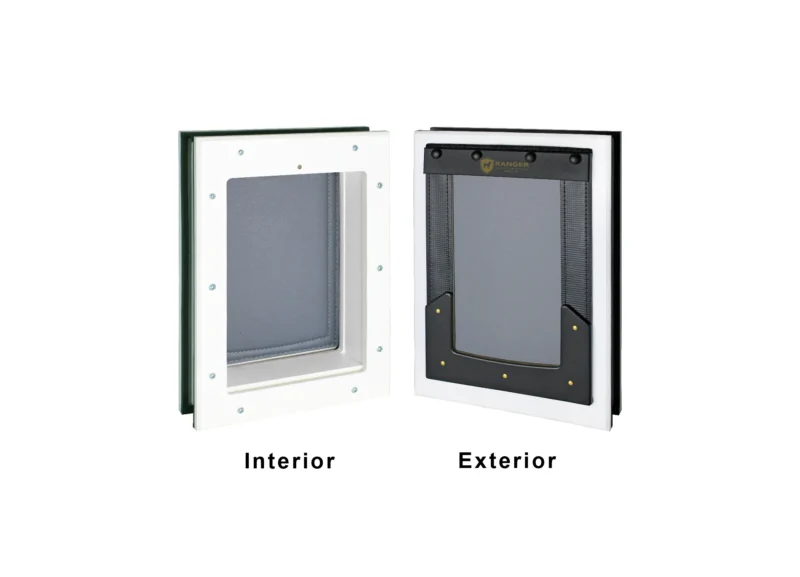
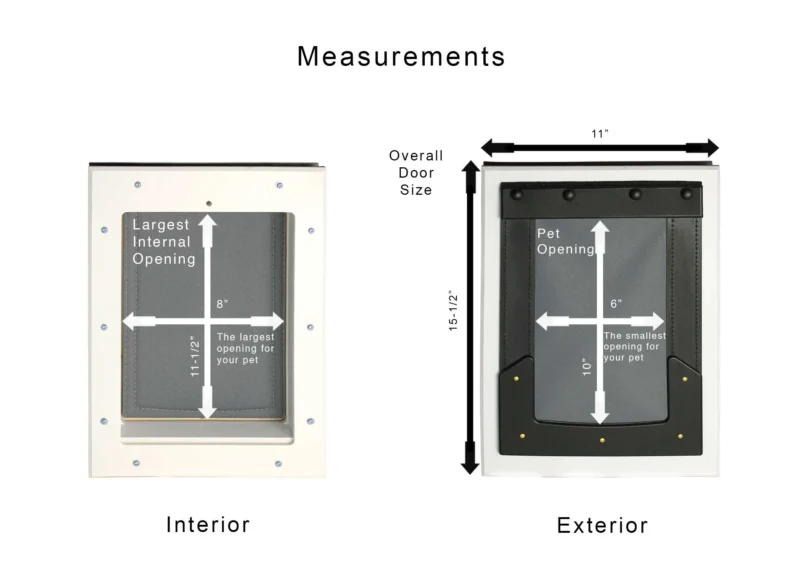
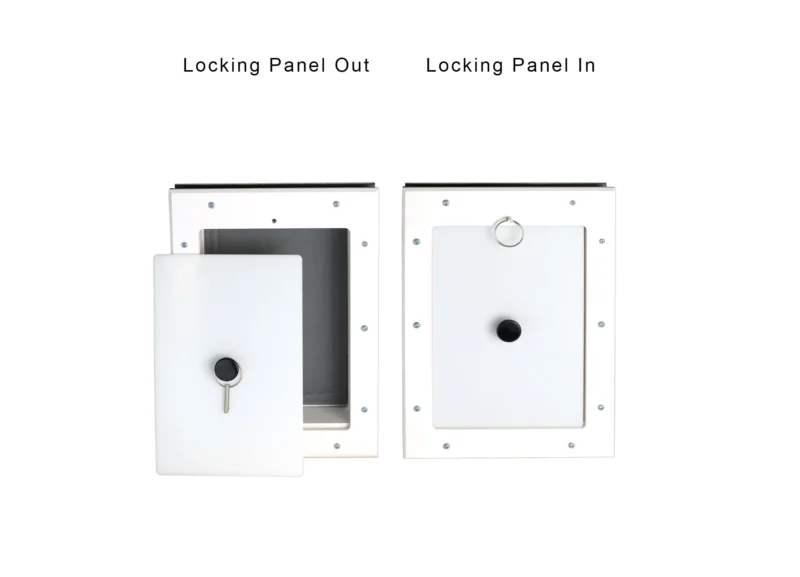















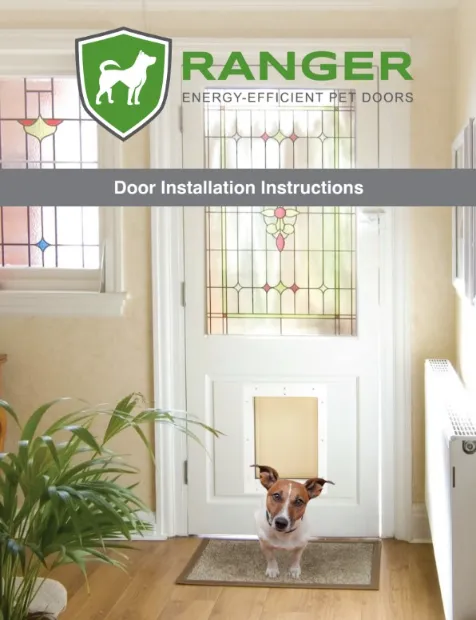
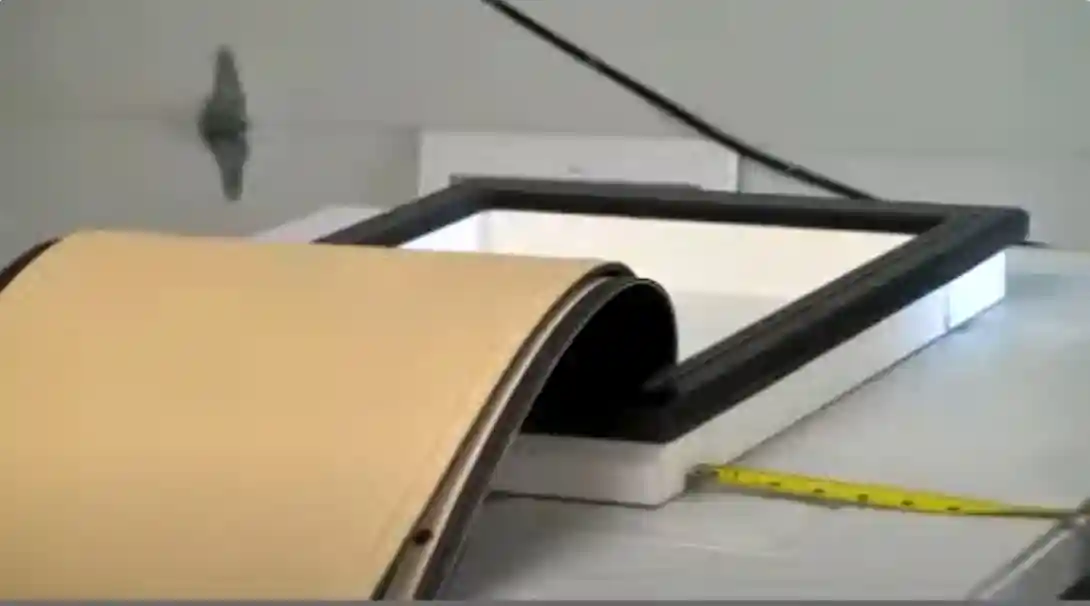
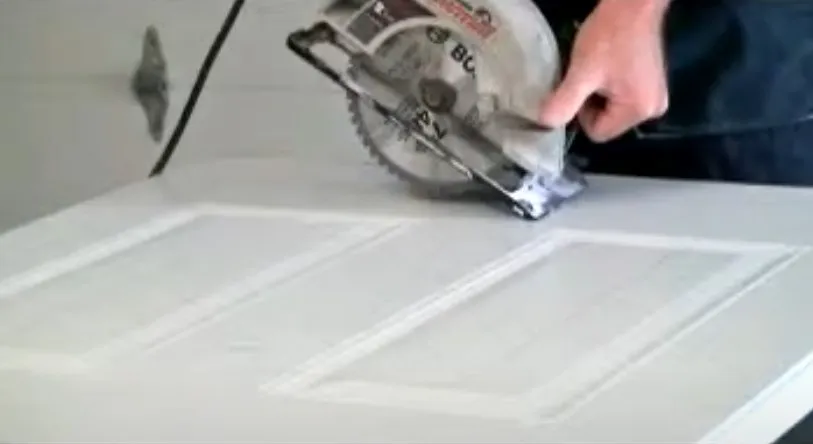

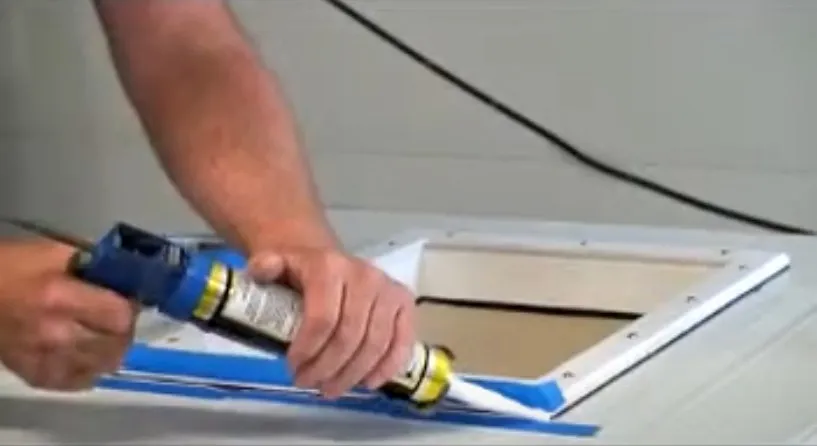




Stephen Boreham (verified owner) –
Hi, I just had to write to say how immensely pleased we are by the cat door you sold to us. We are in an exposed position on the coast where we receive lots of south westerly winds accompanied by rain. I have fitted several different cat flaps in the past but most of them were expensive rubbish. Either the cats broke them or the wind and rain came in and soaked the floor. Now I have fitted your cat door my kitchen is warmer and my oak floor is no longer being damaged by rain. We are really impressed by your product. I would strongly recommend that you market your product in the U.K.
CatPersonUK (verified owner) –
When the door was fitted, the draughts disappeared which was amazing. However, the cats would not use the door. I have 4 cats, all Siamese and Orientals. They’re an intelligent breed, so I wrongly assumed they’d be fine with the new door. The 2 boys grasped it first, not because their intelligence is higher, lol, but they’re taller/leggier so it was easier for them, plus they’re bigger built than the girls and this new flap takes a bit of pressure to open in comparison to the useless cat door that was there before.
In total it took 2 weeks to train all 4 of them to use the door. It was necessary to tie up the outer door for about 3 days, and towards the end I think they were having me on, playing at being helpless! The door has exceeded my expectations in terms of draught control and now the cats are using it just fine, everyone’s happy.
The door you supplied is going to make such a difference to the temperature in my kitchen during the colder months. I’m convinced my heating bills will be much less because of the airtight seal on your door.
The construction of the Freedom Pet Pass cat door is excellent; it’s extremely robust and aesthetically very pleasing.
Gilberte Roulstone (verified owner) –
Quite a few months ago I purchased a freedom pet pass cat door. I just wanted you to know how pleased I am with it. English autumns aren’t the warmest or the driest but I’ve had no problems with draughts or water ingress, I couldn’t have asked for a better cat door. No more draghts!
Julie Clausen (verified owner) –
We have 15 cats that use the door – all have adjusted even our calico that only has one eye and that eye has a scar – she doesn’t like new things since she can’t see very well.
With all these cats go in and our old door let in some such cold air I had to close it down most of the winter – so far so good even on windy days. Only time I’ve had to close it if it’s windy and the cat goes thru slowly. But once It’s closed no air
Kathleen Flanagan (verified owner) –
I am now the proud owner of FOUR of your pet doors! They are worth every penny! This last one I bought has a bit of a backstory – I agreed to take in 5 rescue kitties from a hoarding situation. These five cats were to be barn cats eventually, but I got them the end of October and it was entirely too cold to let them out and expect them to find their way / survive in their brand new home. So I set them up in a back bedroom until spring. These 5 half-feral “barn cats” turned into 5 of the biggest love bugs you ever saw! There was no way I was kicking them out to the barn. So I bought another one of your cat doors and hired a contractor to install the door into the open bedroom window complete with a tiny outdoor deck for them to access this new door. Here is the newest one from inside a back bedroom. I have to wait for the wood to dry out a bit to paint it.
Dan Godfrey (verified owner) –
Our two cats and one dog have been using a Freedom Pet Pass, they all learnt to use it straight away although they did already use a traditional cat flap so that may have helped. This design is simply the best we have seen, there is zero draught even in a storm and it still performs exactly as it did when we installed it 11 YEARS ago! Very functional, 100% effective and durable too. Expensive compared to alternatives but in our experience worth every penny.
Thanks for such a great product.
Iris Olivas (verified owner) –
I love these cat doors! I have bought two of them already. Every time I have moved to a new house, I get one. I live in a very cold climate and these pet doors are amazing to keeping out the cold! My cats learned to use them just fine. I am moving to a new house this week and will try the wall-mounted one next! I will never buy any other cat door; these are awesome!!